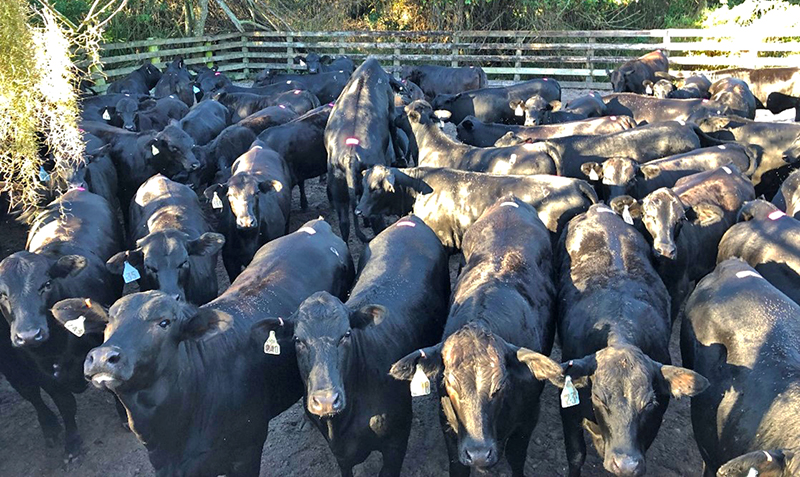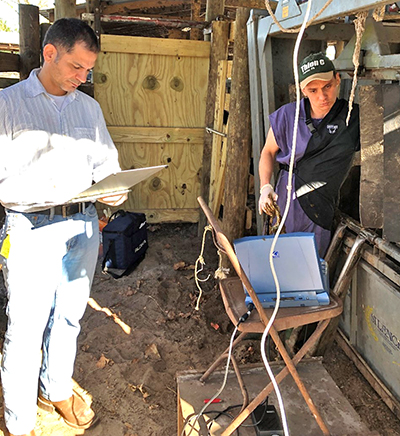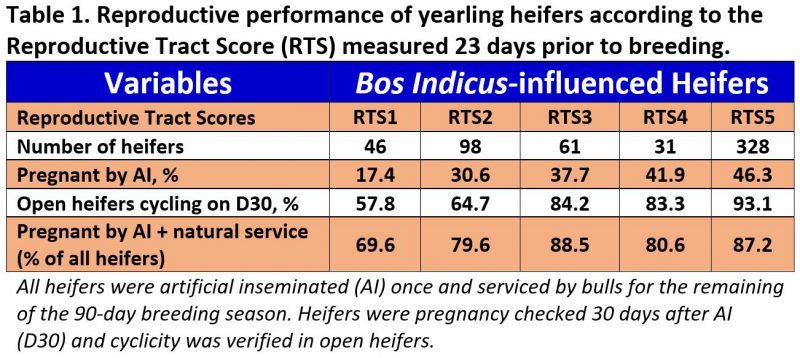Mario Binelli, PhD. Assistant Professor, Department of Animal Sciences, Angela Gonella-Diaza, PhD. Assistant Professor, North Florida Research and Education Center, and Thiago Martins, PhD. Postdoctoral Fellow, Department of Animal Sciences
Winter is not far off, so start paying more attention to your replacement heifers as they come into feed. You know that very soon they will be exposed to bulls and the breeding season will start. You have invested a lot in these heifers. Since before they were born, you have taken care of the health and nutrition of dams and invested in good quality bulls to use as sires. The heifers themselves have been fed, vaccinated and well managed. You also know that the bottom-line for all these investments hinges on obtaining a calf from these heifers at two years of age. So, wouldn’t it be nice to know now how many of these heifers will be pregnant at the end of the season? If you had that sort of information you could direct specific management to sub-groups of heifers based on that prediction!

Selecting the best heifers available to replace aging animals in your herd is one of the most important decisions a manager can make. The Know Your Heifer Program can assist ranchers with more data that allows for more informed choices about which ones to keep. Credit: Mario Binelli, UF/IFAS
The technology required for making such an accurate a prediction is not available at this point. However, research has shown that the reproductive potential of heifers at the beginning of the breeding season, associated with their sexual development, can be measured. The Reproductive Tract Score (RTS) system is based on a real-time evaluation of the uterus and ovaries of heifers. A score from 1 to 5 can be attributed. A score of 1 means that the heifer is immature and a score of 5 means that she is cycling and ready to enter the breeding season. Scores 2 to 4 are intermediate. Recent research data collected from ranches across Florida, by University of Florida scientists, indicates that there is a clear connection between the RTS measured prior to the beginning of the breeding season and the fertility of heifers. This is especially true for fertility early in the season, as there is a proportion of heifers in each herd that will attain puberty and be bred towards the end of the season (Table 1).

UF scientists will evaluate age, breed composition, body weight, body condition score, and reproductive tract scores to generate practical recommendations regarding the reproductive potential of replacement heifers. Credit: Mario Binelli, UF/IFAS
There is a need to enhance the scope of the research and to generate regional and state-wide knowledge on the reproductive potential and performance of yearling heifers. UF scientists have recently launched a research, extension and education program called “Know Your Heifer: Optimizing Replacement Beef Heifer Development in Florida.” The objective is to establish a statewide system to generate information on the reproductive potential and performance of replacement beef heifers. The Program is supported by UF/IFAS Extension and the Department of Animal Sciences. The extension program consists of enrolling ranches and performing two technical visits to each ranch. In the first visit, to be conducted approximately 30 days before the beginning of the breeding season, heifers will be evaluated for reproductive potential. Evaluations consist of an assessment of age, breed composition, body weight (if a scale is available), body condition score and reproductive tract score. They will use their expertise in the application of this technique, integrated with the other assessments, to generate practical recommendations regarding the reproductive potential of heifers. During the second visit (approximately 90 days after the beginning of the breeding season), heifers will be evaluated for their reproductive performance. Heifers will be submitted to a pregnancy test, and producers will know which heifers became pregnant in the first 60 days of the breeding season. The 60-days pregnancy outcome can guide producers for selecting which heifers will remain in the breeding herd as replacements, and which will be sold or culled.
A critical incentive for this proposal is that numerous Florida ranchers have asked about technologies that could be used to evaluate reproductive potential and performance of their heifers. The present program aims to fulfill this specific need. Two secondary outcomes of this program are also expected. First, more direct interaction with ranchers will help the Know Your Heifer Team to determine additional educational needs as they relate to the more advanced aspects of reproductive, nutritional, economic, and health-related aspects of beef cattle management. Second, the Know Your Heifer Team will be able to compound relevant information about the Florida beef breeding herd, to be used for extension, research and teaching purposes by University of Florida faculty and by local veterinarians. Thus, it is critical to point out that this will not be a clinical service, but rather a research and extension program. As the database grows, the indicators of fertility may be used in improved algorithms or decision-making tools that will be available for producers, allied industry and faculty.
More information is available on the Know Your Heifer Program website, or by contacting your local County Extension Office. How well do you really know the potential of your replacement heifers? You make substantial investments in the future breeding animals for your herd. With more information, you can make wiser choices and improve the efficiency of your entire operation.
- Heat Stress and its Impact on Cattle Reproduction - March 14, 2025
- Fall is Here.Time for Pregnancy Testing Cattle! - September 13, 2024
- How Stress Impacts Cattle Reproduction - March 15, 2024

